<<PREVIOUS -
HOME -
CONTENTS -
NEXT>>
SPECTROSCOPY INDEX -
![]()
Quasar 3C 273 Spectrum and Measuring 3C 273 Redshift
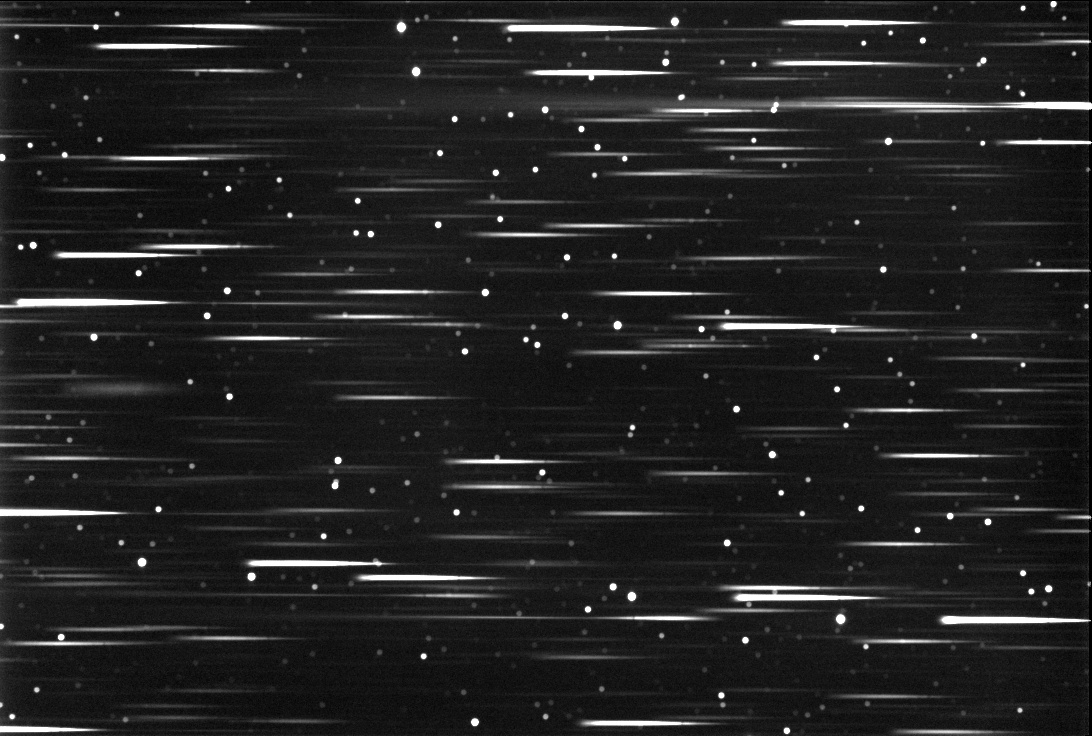
|
3C 273 is in the center of this full FOV image at half scale.
3C 273 cropped image at full scale.
<<PREVIOUS -
HOME -
CONTENTS -
NEXT>>
SPECTROSCOPY INDEX -
![]()

|
3C 273 is in the center of this full FOV image at half scale.
3C 273 cropped image at full scale.
|
Summary
The average of the measured H-alpha and H-beta redshifts is z=.1608 which is 1.5%: higher than
z=0.158339
in the
NASA/IPAC Extragalactic database.
It is amazing that amateur astronomers with small optics (127 mm refractor) in light polluted skies can duplicate this historical observation and analysis that was first done by Dr. Maarten Schmidt in 1963 with a 200 inch (5.08 m) reflector.
|
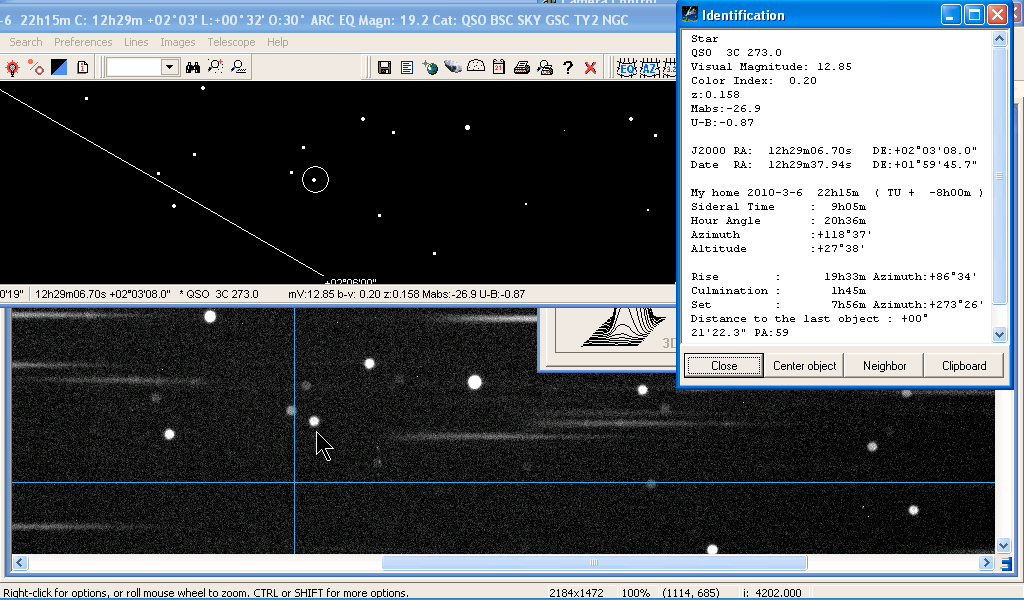
|
|
Seeing the 3-D H-alpha and H-beta Emisson Lines in the Processed Image |
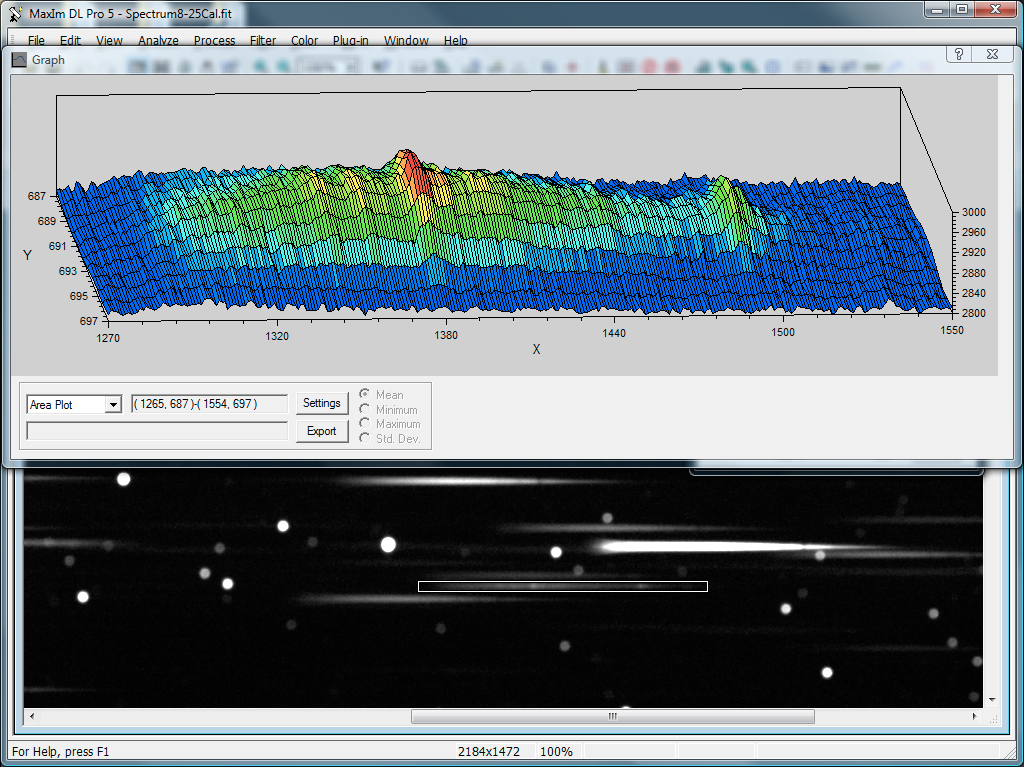
|
Star BD+02 2547 next to 3C 273 in Same Image is Used for Spectrum Calibration |
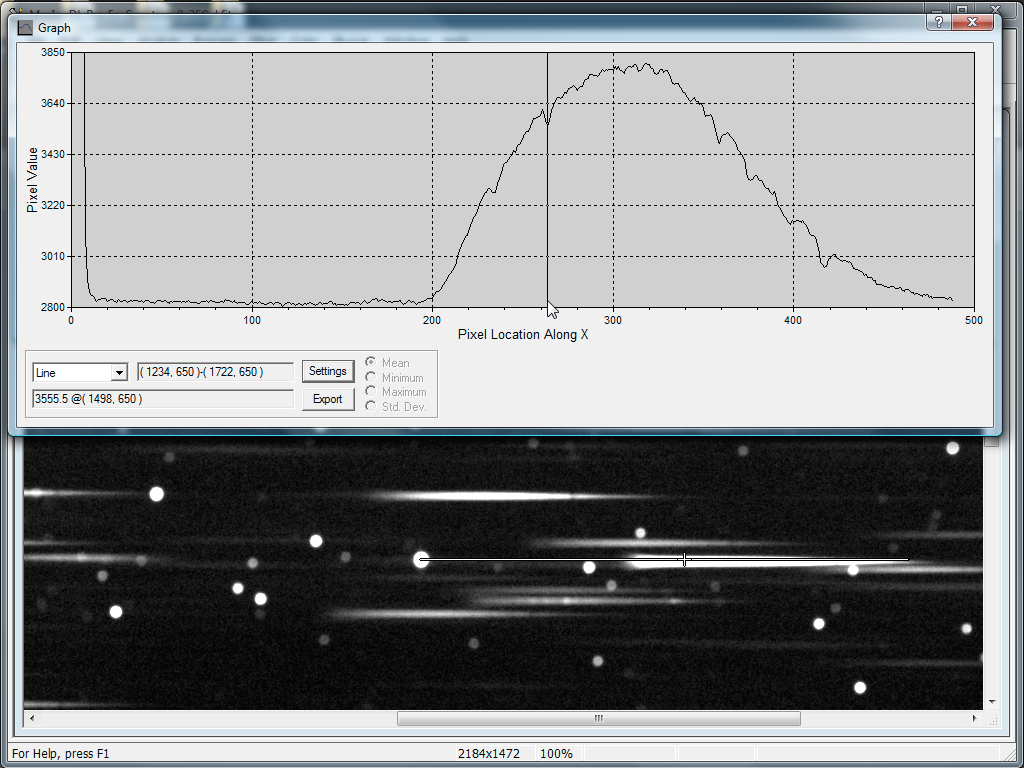
|
A simple spectrum calibration was done with the H-beta absorption line of the following nearby star.
This star is above and to the right of 3C273 in the above screen capture. The calibration is 18.553 ┼/pixel at H-beta absorption line. Also, based on this calibration the Rainbow Optics Visual, Photo and CCD Star Spectroscope mounted in the QSI 532ws-M1 filter wheel is at a distance of 18.24mm from the CCD. 3C 273 Spectrum Chart with Redsift Emission Line Markers 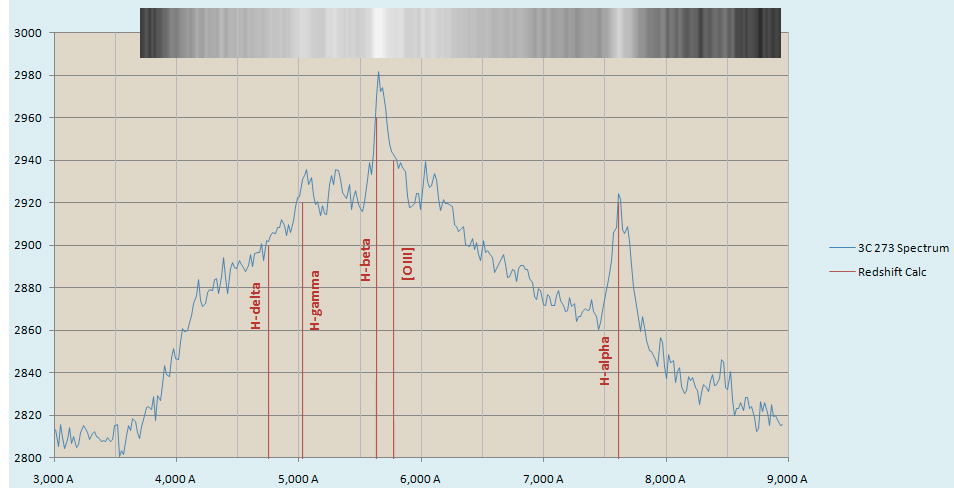
The above chart is the measured 3C273 spectrum with redsift emission line markers. The H-beta pixel distance and 18.553 ┼/pixel from the above star BD+02 2547 were used to calibrate the x axis in angstroms. Five red emission reference line markers were added to show the observed redshift (z=.158339) of the elements in the below table. The vertical axis is the intensity values of the spectrum image. The spectrum bump at 8,400 ┼ to 8,500 ┼ is a spectral order zero field star (magnitude 16.68 red) SDSS J123000.57+015343.6 (summary data) The 3C273 observed H-alpha is at 7602 ┼ which is above the normal human visible light vision range of 3800 ┼ to 7400 ┼. 3C 273 Spectrum Calibration Steps
3C 273 Quasar Redshift Emission Lines Table |
|
3C 273 Redshift |
|
|
Redsift Analysis Based on the above 3C 273 Spectrum Chart |
|
Emit Wavelength |
Observed Wavelength at Peak |
Observed Redshift z |
Redshift Error |
Signal/Noise Ratio at Peak |
|
|
H-alpha |
6563 ┼ |
7609 ┼ |
0.1594 |
0.6909% |
26.28 |
|
H-beta |
4861 ┼ |
5649 ┼ |
0.1622 |
2.421% |
39.14 |
|
The average of the measured H-alpha and H-beta redshifts is z=.1608 |
|||||
Note: Signal/Noise Ratio at Peak = (Peak-Background Ave)/(Background Std Dev)
H-beta Signal/Noise Ratio at Peak = (2981.76-2806.47)/(4.478) = 39.14 S/N
Imaging Equipment
Monitor Test PatternThe following test pattern is to help you adjust your monitor to best view the CCD astro images. The test pattern is used for adjusting monitor brightness, and contrast. Adjust monitor brightness and contrast to see all 16 gray scale levels. The most important adjustment when viewing astro images is to see the differences in all of the black bands. |